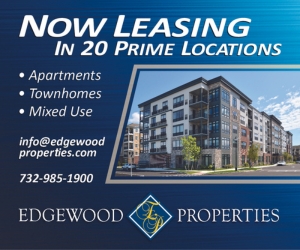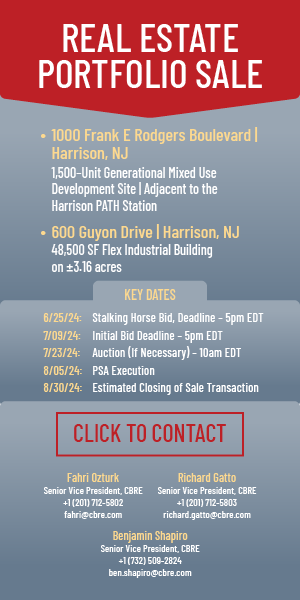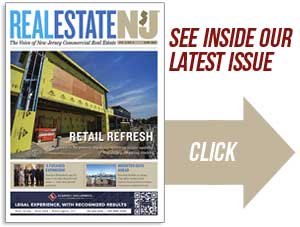By Joshua Burd
Landlords in New Jersey’s industrial market are naming their price when it comes time for tenant renewals, as availability remains at low levels not seen in more than a decade.
That’s according to new research by CBRE Group Inc., which examined renewal transactions in northern and central New Jersey that were signed over a six-month period starting in October. The firm found that tenants committed to lease rates that are, on average, 25.8 percent higher than what they paid previously.
“Tenants are experiencing sticker shock when they realize the significant lease rate increases they’re experiencing upon renewal,” said Thomas Monahan, executive vice president at CBRE. “The expansion experienced in New Jersey’s industrial market has mirrored that of the United States economy overall, and as New York City’s population continues to expand, so too does the demand for quicker access to the most populated city in the country.”
Experts with CBRE say availability rates in the market dropped to prerecession levels late last year and have remained stable in 2017, even developers complete new industrial projects. The firm said the Meadowlands, Interstate 287/Exit 10 and Exit 8A submarkets, which were home to seven of the 10 new warehouse deliveries during the first quarter of 2017, captured 64.3 percent of leasing velocity during that period.
The follows a year in which those three regions captured 52.4 percent of all activity in the market. And after recording negative absorption in the fourth quarter of 2016, the market rebounded in Q1 with 1.35 million square feet of net absorption, despite the completion of 10 new projects totaling 2.64 million square feet.
In its new market report, CBRE also found that tenants that reject the large rent increases are being pushed farther south and west in hopes of lower rates. For instance, Morris County and the Trenton/Interstate 295 area, the most western and southern submarkets, respectively, each saw leasing activity increase by 38 percent quarter-over-quarter in Q1, resulting in a significant decline in availability over the same period.
The firm said those submarkets “had exceptionally strong first quarters.”
“The large number of companies willing to pay a premium for location have expanded the market, pushing companies not as dependent on New York City’s consumer base south and west,” said Mindy Lissner, executive vice president at CBRE. “This southern and westward movement could have a significant impact on the geography of New Jersey’s industrial market, pushing expansion into the future.
“The question that remains, then, is when will the pendulum swing in back in favor of tenants?”
CBRE has identified about 5.5 million square feet of warehouse space that is being built speculatively in New Jersey and will hit the market later this year. That could push availability upward by late 2018, experts say, but they noted that landlords will remain well-positioned in the market.
The firm also said that average asking and taking lease rates in New Jersey have climbed to $6.42 per square foot and $7.08 per square foot, respectively, a difference that reflects the historically high demand for industrial space.
“Increased consumer buying power paired with the expectation of timely online purchase deliveries have kept the up-cycle alive, and perhaps lengthened it,” Monahan said. “E-commerce and direct-to-consumer companies are reworking their real estate and logistics models to adapt to new consumer expectations. Though the stats may demonstrate a momentum slowdown by the end of 2017, these evolutionary changes will continue to drive healthy market fundamentals in New Jersey.”









